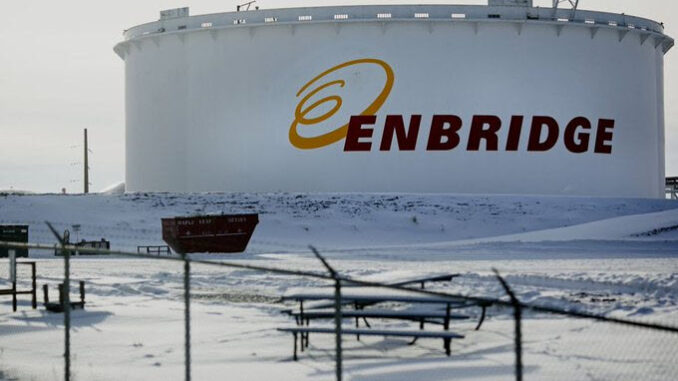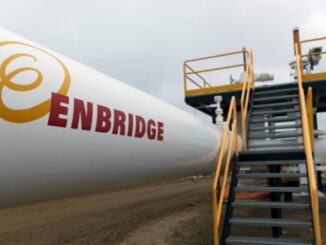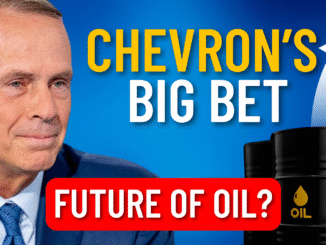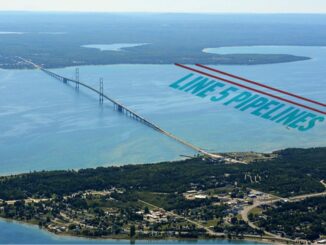
In a robust display of resilience amid fluctuating energy markets, Enbridge Inc. (NYSE: ENB), one of North America’s leading energy infrastructure companies, has reported record core earnings for the second quarter of 2025. The Calgary-based pipeline giant’s performance underscores the growing demand for natural gas and power, driven by industrial expansion, liquefied natural gas (LNG) exports, and the integration of renewable energy sources. This article delves into the details of Enbridge’s latest earnings report and explores the broader investment landscape across the upstream, midstream, and downstream segments of the oil and gas industry.
Are you from California or New York and need a tax break?
Enbridge’s Q2 2025 Earnings Highlights
Enbridge’s second-quarter results, released on August 1, 2025, exceeded analyst expectations, highlighting the company’s strategic positioning in the midstream sector. Adjusted earnings before interest, taxes, depreciation, and amortization (EBITDA)—a key measure of core earnings—reached a record C$4.64 billion, marking significant growth compared to the previous year.
This surge was primarily fueled by strong demand for natural gas transportation and power delivery, bolstered by recent acquisitions in U.S. gas utilities and favorable rate settlements.
Key financial metrics from the report include:Adjusted Earnings Per Share (EPS): C$0.65, surpassing consensus estimates of C$0.57 by approximately 14% and representing a 55% increase year-over-year.
GAAP Earnings: Attributable to common shareholders rose to C$2.2 billion, or C$0.47 per share, up from C$1.8 billion in Q2 2024.
Revenue: Beat expectations by 18%, reflecting higher throughput in pipelines and increased utilization of storage and transmission assets.
The company’s Liquids Pipelines segment benefited from steady crude oil transport volumes, while the Gas Transmission and Midstream division saw gains from elevated natural gas demand, particularly for power generation and LNG exports. Enbridge also announced new investments in infrastructure to support growing industrial and power needs, including expansions tied to data centers and renewable energy integration.
Management reaffirmed its full-year 2025 financial guidance, projecting EBITDA at the upper end of the previously outlined range, signaling confidence in sustained demand.
Enbridge’s CEO emphasized in the earnings call that the company’s diversified portfolio and focus on low-carbon energy transitions position it well for long-term growth, even as global energy markets navigate volatility.
Shares of ENB rose modestly in after-hours trading following the announcement, reflecting investor optimism about the firm’s stable cash flows and dividend reliability.
Broader Market Context for Oil and Gas Investors
Enbridge’s strong results come against a backdrop of mixed signals in the oil and gas industry. As of mid-2025, the sector is grappling with geopolitical tensions, shifting demand patterns, and the push toward sustainability. Below, we break down the investment outlook for the upstream, midstream, and downstream segments, drawing on recent industry analyses.
Upstream: Cautious Outlook Amid Declining Investments
The upstream sector, focused on exploration and production, faces a deteriorating outlook for 2025 due to softening global oil demand growth and reduced capital expenditures.
Upstream oil investments are projected to decline by 6% to around USD 420 billion globally, with notable cuts in U.S. light tight oil operations.
Despite this, U.S. crude oil production is expected to grow modestly by 1.6%, or about 210,000 barrels per day (bpd), driven by efficiency gains in key basins like the Permian.
Oil prices are forecasted to average between USD 70-80 per barrel for Brent crude, though some estimates suggest a dip to USD 63/bbl in the second half of the year if supply outpaces demand.
Geopolitical risks, including ongoing conflicts in the Middle East, could add a premium of up to USD 10/bbl.
For investors, this segment offers opportunities in consolidated players with strong balance sheets, but volatility remains high. Capital spending across the industry is set to rise only 0.5%, prioritizing returns over aggressive expansion.
Midstream: Resilient Growth Driven by Natural Gas
Midstream companies like Enbridge are poised for continued strength in 2025, benefiting from structural tailwinds in natural gas and natural gas liquids (NGL) transportation.
Asset utilization in North America is expected to remain high, with modest production increases supporting pipeline and storage demand.
The sector’s focus on facilitating gas exports to Europe and Asia, amid U.S. natural gas production growth of 1-3%, positions it as a defensive play.
EBITDA growth is anticipated to be moderate, with acquisitions driving upside for select firms.
Consolidation trends, extending from upstream into midstream, could enhance scale and efficiency.
Investors may find value in midstream master limited partnerships (MLPs) and infrastructure funds, which offer attractive yields and lower sensitivity to commodity price swings compared to upstream peers.
Enbridge’s performance exemplifies this resilience, with its emphasis on gas utilities and LNG-related infrastructure aligning well with market trends.
Downstream: Balanced Markets with Modest Expansion
The downstream segment, encompassing refining and petrochemicals, is expected to maintain balance in 2025-2026, with global oil consumption rising slightly to 104.26 million bpd.
Capital expenditures are projected to increase by 4%, fueled by mergers and acquisitions aimed at achieving scale in a competitive landscape.
Refining margins may face pressure from oversupply in some regions, but demand for cleaner fuels and chemicals supports growth. Key trends include investments in low-carbon refining processes and integration with renewables, as companies adapt to energy transition pressures.
For investors, downstream offers stability through diversified revenue streams, though exposure to crack spreads and regulatory changes warrants caution. Overall, the sector’s outlook is positive but tempered by economic uncertainties in major markets like China.
Implications for Investors
Enbridge’s record earnings highlight the midstream sector’s appeal as a haven in an otherwise uneven oil and gas landscape. With natural gas demand surging for power generation and exports, companies like Enbridge are well-equipped to deliver consistent returns. However, investors should monitor geopolitical risks, which could elevate prices and volatility across all segments.
Diversification remains key: upstream for growth-oriented plays, midstream for income, and downstream for balance.
As the energy transition accelerates, opportunities in hybrid infrastructure—blending traditional oil/gas with renewables—could define winners in 2025 and beyond. For the latest updates, stay tuned to Energy News Beat.
Is Oil & Gas Right for Your Portfolio?
Crude Oil, LNG, Jet Fuel price quote
ENB Top News
ENB
Energy Dashboard
ENB Podcast
ENB Substack






